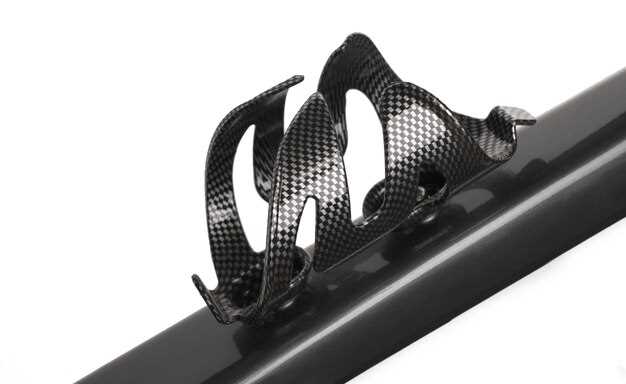
In the quest for ultimate racing performance, every component of a vehicle plays a crucial role. The importance of weight reduction cannot be overstated, as even minor adjustments can lead to significant enhancements in speed and handling. Lightweight parts are at the forefront of this endeavor, enabling racers to maximize their acceleration and cornering capabilities.
The incorporation of advanced lightweight materials such as carbon fiber, aluminum alloys, and plastics has revolutionized the automotive racing industry. These materials not only reduce the overall weight of the vehicle but also maintain or enhance structural integrity and aerodynamics. As a result, modern racing teams are progressively investing in innovations that focus on minimizing weight while optimizing performance.
By employing lightweight components, teams can achieve better power-to-weight ratios, allowing engines to perform more efficiently. This balance between reducing mass and maintaining effectiveness is essential for gaining a competitive edge on the track. As racing continues to evolve, the pursuit of the lightest yet most durable parts remains a top priority for optimizing racing speed.
Choosing the Right Lightweight Materials for Racing Components
In the pursuit of speed and performance in racing, the selection of lightweight materials is paramount. The right materials can significantly enhance the vehicle’s overall efficiency, agility, and acceleration, leading to competitive advantages on the track.
One of the most popular materials in racing is carbon fiber. Known for its exceptional strength-to-weight ratio, carbon fiber components provide significant weight savings without compromising structural integrity. This characteristic is crucial in high-speed racing, where every ounce counts. Components like chassis, body panels, and aerodynamic elements often utilize carbon fiber to maximize speed.
Another innovative option is aluminum alloys, which offer a great balance between weight and durability. These materials are frequently used in wheel construction and suspension systems. Aluminum not only contributes to reduced weight but also enhances heat dissipation, which is vital for maintaining optimal performance during intense racing conditions.
Furthermore, advanced composites, such as aramid and fiberglass, present viable alternatives for specific applications. While they may not match the weight efficiency of carbon fiber, these materials are often more cost-effective and still provide adequate performance for less extreme racing events. Choosing the right composite can result in considerable weight reductions while maintaining safety and reliability.
Thermoplastics also make their mark in racing. They offer excellent weight savings and flexibility, enabling manufacturers to create complex shapes and designs. Applications include interior components and non-structural panels, where lightweight solutions can be integrated without sacrificing aesthetic appeal or functionality.
Ultimately, selecting the appropriate lightweight materials involves a careful assessment of various factors, including application requirements, cost, and the desired balance between weight and strength. The right choices not only enhance speed but also contribute to greater fuel efficiency and improved handling, making them essential for any serious racing endeavor.
Impact of Weight Reduction on Acceleration and Handling

Reducing the weight of racing vehicles has a profound effect on their performance, particularly in terms of acceleration and handling. Lighter parts contribute significantly to improved speed by allowing the engine to exert its power more effectively. When a vehicle is lighter, it requires less energy to achieve acceleration, which results in quicker response times and better overall performance on the track.
The relationship between weight and acceleration is governed by Newton’s second law of motion, which states that force is equal to mass times acceleration. Therefore, by decreasing the mass of the vehicle through the integration of lightweight materials, manufacturers can enhance acceleration without needing to increase engine power. This is especially crucial in racing scenarios, where every millisecond counts.
Moreover, weight reduction positively influences a vehicle’s handling characteristics. A lighter chassis allows for improved weight distribution, which enhances the car’s stability during high-speed maneuvers. This enables better cornering capabilities, as the vehicle can maintain traction more effectively. As a result, drivers can navigate turns with greater confidence and precision, ultimately leading to faster lap times.
The use of advanced materials like carbon fiber, aluminum alloys, and composite components has revolutionized the racing industry by providing the necessary strength while minimizing weight. By focusing on reducing the mass of key parts, teams can optimize their vehicles for performance, achieving a balance between speed and control that is essential for competitive racing.
Cost-Benefit Analysis of Upgrading to Lightweight Parts

Upgrading to lightweight parts is an essential consideration for enhancing racing speed. The initial investment in these materials can seem significant, so it’s crucial to evaluate the long-term benefits against the costs involved. Lightweight components, such as carbon fiber or high-strength aluminum alloys, fundamentally change the performance dynamics of a racing vehicle.
One of the primary benefits of lightweight parts is the improvement in acceleration and handling. Reducing overall weight allows for faster speeds, as less power is required to move the vehicle. This increase in speed directly translates to performance improvements on the track, potentially leading to better lap times and overall race outcomes.
However, these advantages come at a price. Lightweight materials often cost significantly more than traditional components. It’s important for teams to conduct a thorough cost analysis, weighing the upfront expense against potential performance gains and the likelihood of achieving a competitive edge. Budget constraints should be taken into consideration, along with the expected lifespan and maintenance costs of the upgraded parts.
Another factor in the analysis is the potential for reduced fuel consumption. Lighter vehicles consume less energy, which can translate into lower operational costs during races. This could make lightweight upgrades a financially savvy move over the course of a season, as savings on fuel can offset some of the initial investment in new parts.
Ultimately, the decision to upgrade to lightweight parts should be based on a detailed assessment of speed improvements, projected cost savings, and competitive benefits. It is essential to strike a balance between performance enhancements and financial feasibility to ensure that the investment in lightweight materials yields the desired returns on the racetrack.
